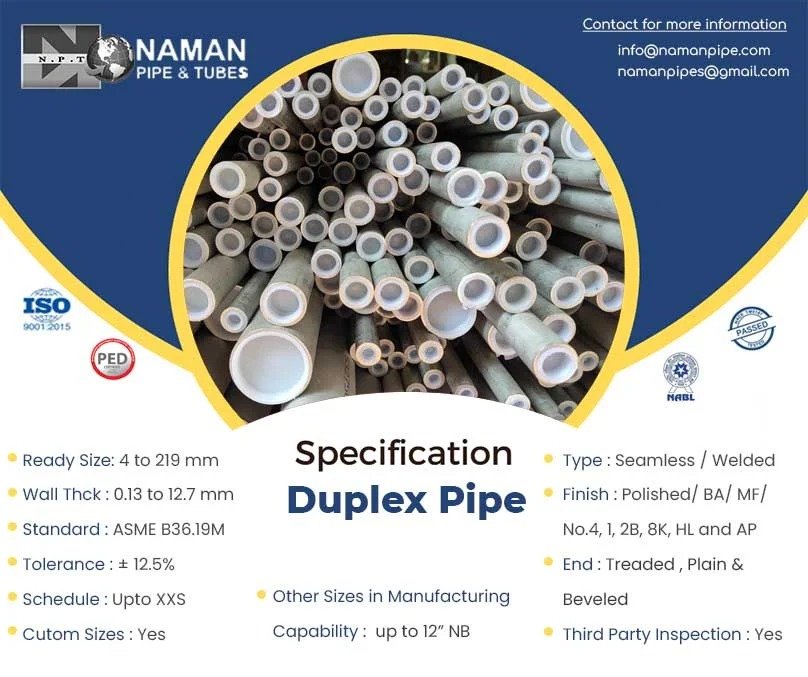VPAT, Accessibility Conformance Reports, and WCAG: Ensuring Inclusive Digital Products
Digital accessibility is essential in today’s technology-driven world. Websites, applications, and digital products must be usable by everyone, including people with disabilities. Achieving accessibility requires adherence to standards such as WCAG (Web Content Accessibility Guidelines) and proper documentation through VPATs and Accessibility Conformance Reports (ACRs). These tools allow organizations to demonstrate compliance, make informed purchasing decisions, and ensure inclusive digital experiences for all users.
Understanding VPAT
VPAT stands for Voluntary Product Accessibility Template. It is a structured document that allows vendors to report the accessibility of their products in a standardized format. VPATs help organizations evaluate products against accessibility standards such as WCAG, Section 508 of the Rehabilitation Act, and other relevant guidelines.
A VPAT outlines how a product meets specific accessibility criteria, indicating full support, partial support, non-support, or non-applicability for each criterion. By providing this information, vendors can demonstrate transparency and enable buyers, procurement teams, and compliance officers to assess accessibility accurately.
What Is an Accessibility Conformance Report (ACR)?
An Accessibility Conformance Report, or ACR, is a summary document derived from a VPAT assessment. While VPATs provide detailed line-by-line documentation of accessibility conformance, an ACR presents an overview of the product’s accessibility performance. It highlights areas of full compliance, partial compliance, and non-compliance and provides explanations for any limitations.
A standard Accessibility Conformance Report includes:
-
Product name and version
-
Standards and guidelines used for assessment (e.g., WCAG, Section 508)
-
Conformance status for each criterion
-
Remarks or clarifications for partial or non-conformance
-
Contact information for accessibility support or inquiries
ACRs are used widely in procurement, compliance audits, and product evaluations, providing a clear understanding of a product’s accessibility features.
VPAT Versions: 2.4 and 2.5
VPAT template have evolved to reflect updates in accessibility standards. The two most widely used versions are VPAT 2.4 and VPAT 2.5.
-
VPAT 2.4: Updated to align with WCAG and Section 508 requirements, this version provides a structured format for reporting accessibility and is commonly used for procurement processes.
-
VPAT 2.5: The latest version of the template includes more detailed fields and additional guidance, ensuring greater clarity, transparency, and alignment with modern accessibility standards.
Choosing the correct VPAT version ensures that reports are relevant, consistent, and compliant with current accessibility expectations.
Importance of VPAT Compliance Testing
VPAT compliance testing is a critical step in producing accurate Accessibility Conformance Reports. Compliance testing evaluates a product’s accessibility features and identifies gaps in meeting WCAG or Section 508 standards.
Key aspects of VPAT compliance testing include:
-
Evaluating product usability with assistive technologies, such as screen readers, magnifiers, and speech recognition tools
-
Testing navigation, forms, multimedia, and interactive elements for accessibility
-
Documenting conformance levels for each criterion
-
Providing detailed explanations for partial or non-conformance
-
Producing VPATs and ACRs that reflect true accessibility performance
Conducting comprehensive compliance testing ensures that organizations can provide reliable accessibility information to stakeholders, customers, and regulatory authorities.
Voluntary Product Accessibility Template (VPAT Template)
The VPAT template is the standardized document that vendors use to report accessibility compliance. Each section of the template addresses specific accessibility criteria, allowing vendors to indicate whether a product:
-
Fully supports a criterion
-
Partially supports a criterion
-
Does not support a criterion
-
Has a criterion that is not applicable
Using a VPAT template ensures consistency across reports, enabling organizations to compare multiple products and evaluate accessibility objectively. VPAT template examples can provide guidance for completing reports accurately.
VPAT Assessment
VPAT assessment is the process of reviewing a product’s accessibility and documenting the results. This involves testing digital products against WCAG and Section 508 guidelines, identifying accessibility gaps, and producing an official VPAT and ACR.
The VPAT assessment process typically includes:
-
Reviewing interactive elements, forms, and navigation for accessibility
-
Testing multimedia, such as videos and audio, for captions, transcripts, and audio descriptions
-
Evaluating the product against WCAG success criteria at levels A, AA, and AAA
-
Documenting findings in the VPAT template
-
Creating an Accessibility Conformance Report that summarizes accessibility performance
A thorough VPAT assessment ensures that the Accessibility Conformance Report accurately reflects the product’s accessibility capabilities.
WCAG Compliance and Testing
WCAG (Web Content Accessibility Guidelines) is the internationally recognized standard for digital accessibility. WCAG guidelines address usability for individuals with visual, auditory, motor, or cognitive impairments. They cover areas such as readability, navigation, multimedia, color contrast, and keyboard accessibility.
WCAG testing evaluates a product against success criteria at three levels:
-
Level A: Basic accessibility requirements
-
Level AA: Addresses common accessibility barriers
-
Level AAA: The highest level of accessibility
Most organizations aim for Level AA compliance as it balances usability and feasibility. WCAG compliance testing ensures that products are accessible to the widest possible audience and helps identify areas for remediation. WCAG certification, while optional, provides additional credibility for accessibility performance.
Benefits of VPAT and Accessibility Conformance Reports
Implementing VPATs and Accessibility Conformance Reports offers numerous advantages:
-
Transparency: Clearly communicates a product’s accessibility features and limitations
-
Legal Compliance: Supports adherence to accessibility laws and regulations
-
Risk Reduction: Minimizes potential legal exposure related to accessibility non-compliance
-
Informed Procurement: Enables organizations to select accessible products confidently
-
Continuous Improvement: Identifies gaps for remediation and enhancement
-
Inclusive User Experience: Ensures digital products are usable by individuals with disabilities
VPATs and ACRs help organizations foster accountability and prioritize accessibility in product development and procurement.
Best Practices for VPAT Reporting
To ensure accurate and effective VPAT reports, vendors should:
-
Use clear and precise language when documenting accessibility conformance
-
Reference specific WCAG success criteria for clarity
-
Provide detailed remarks for partial or non-conformance
-
Update VPATs regularly to reflect product changes or updates
-
Train teams on accessibility standards, VPAT completion, and compliance best practices
Following these best practices ensures that VPATs and Accessibility Conformance Reports are reliable, consistent, and valuable for organizations evaluating accessibility.
VPAT Template Examples
VPAT template examples serve as guidance for completing accessibility reports. They illustrate how to document conformance, include explanatory remarks, and reference applicable standards. Common elements in examples include:
-
Sections for WCAG, Section 508, and other accessibility guidelines
-
Sample entries for full, partial, or non-compliance
-
Guidance on documenting testing methods and results
Using VPAT template examples improves the quality of reporting and ensures consistency across multiple products.
Accessibility Conformance Report in Practice
Accessibility Conformance Reports are used in procurement, compliance reviews, and accessibility audits. Organizations review ACRs to:
-
Verify product accessibility
-
Identify areas of partial or non-compliance
-
Ensure adherence to WCAG guidelines and Section 508
-
Communicate findings to development teams, procurement officers, and stakeholders
ACRs provide an official record of accessibility performance and serve as a reference for ensuring products remain accessible throughout their lifecycle.
Conclusion
VPATs, Accessibility Conformance Reports, and WCAG compliance form the foundation of effective digital accessibility. These tools provide structured documentation, testing, and reporting that enable organizations to evaluate and procure accessible products confidently.
VPAT assessments, compliance testing, and ACR reporting ensure that products meet accessibility standards, reduce legal risk, and improve user experience for individuals with disabilities. WCAG compliance testing and certification provide additional validation and demonstrate a commitment to inclusive design.
By prioritizing VPAT and Accessibility Conformance Reports, organizations create digital products that are inclusive, usable, and compliant with accessibility standards. Implementing these processes fosters accountability, enhances usability, and ensures that digital experiences are accessible to everyone, making accessibility a core part of digital product strategy.
- Share

YOU MIGHT ALSO ENJOY
Key Features of High-Quality Duplex Flanges Manufacturers You Should Know
Stephen Romero - November 19, 2025
Strength in Every Seam: Trusted Steel Pipes for Modern Industry Needs
Stephen Romero - November 19, 2025
Why Basic Pipes and Metal Components Do Much More Than We Notice
Stephen Romero - November 19, 2025
search
FAST ACCESS
- art&gallery (4)
- Automotive (25)
- beauty (6)
- blog (277)
- Business (589)
- cleening (13)
- clinic (1)
- courier services (4)
- dentel care (6)
- Driving school (3)
- electronics (1)
- events (1)
- forests (11)
- gameing (5)
- Health (25)
- Health & Fitness (217)
- Home & Garden (16)
- Landscaping (1)
- Law (16)
- Lifestyle (9)
- machinery (5)
- Real Estate (9)
- Share Market (15)
- Shopping (5)
- Technology (30)
- tool (2)
- toys (2)
- Travel (29)
- Wedding & Events (325)
must read
VPAT, Accessibility Conformance Reports, and WCAG: Ensuring Inclusive Digital Products
Stephen Romero - November 20, 2025
Key Features of High-Quality Duplex Flanges Manufacturers You Should Know
Stephen Romero - November 19, 2025
Strength in Every Seam: Trusted Steel Pipes for Modern Industry Needs
Stephen Romero - November 19, 2025
recent post
ARCHIVES
- November 2025 (81)
- October 2025 (105)
- September 2025 (166)
- August 2025 (164)
- July 2025 (150)
- June 2025 (173)
- May 2025 (99)
- April 2025 (1)
- March 2025 (8)
- February 2025 (9)
- January 2025 (8)
- December 2024 (25)
- November 2024 (40)
- October 2024 (11)
- September 2024 (1)
- July 2024 (10)
- June 2024 (11)
- May 2024 (31)
- April 2024 (15)
- March 2024 (19)
- February 2024 (6)
- January 2024 (7)
- December 2023 (11)
- November 2023 (1)
- July 2023 (13)
- June 2023 (21)
- May 2023 (27)
- April 2023 (23)
- March 2023 (16)
- February 2023 (31)
- January 2023 (27)
- December 2022 (11)
- November 2022 (12)
- October 2022 (11)
- September 2022 (11)
- August 2022 (14)
- July 2022 (13)
- June 2022 (19)
- May 2022 (17)
- April 2022 (10)
- March 2022 (12)
- February 2022 (8)
- January 2022 (9)
- December 2021 (19)
- November 2021 (4)
- October 2021 (6)
- September 2021 (4)
- August 2021 (4)
- July 2021 (10)
- June 2021 (6)
- May 2021 (2)
- April 2021 (2)
- March 2021 (45)
- August 2020 (31)
- July 2020 (30)
- June 2020 (29)










